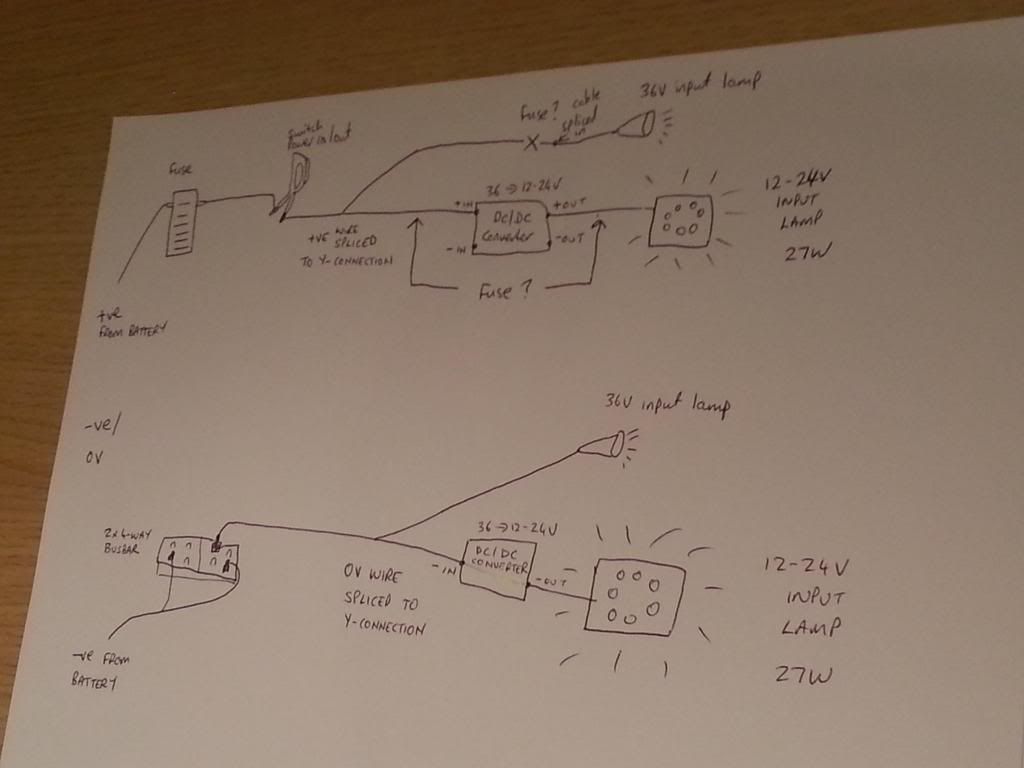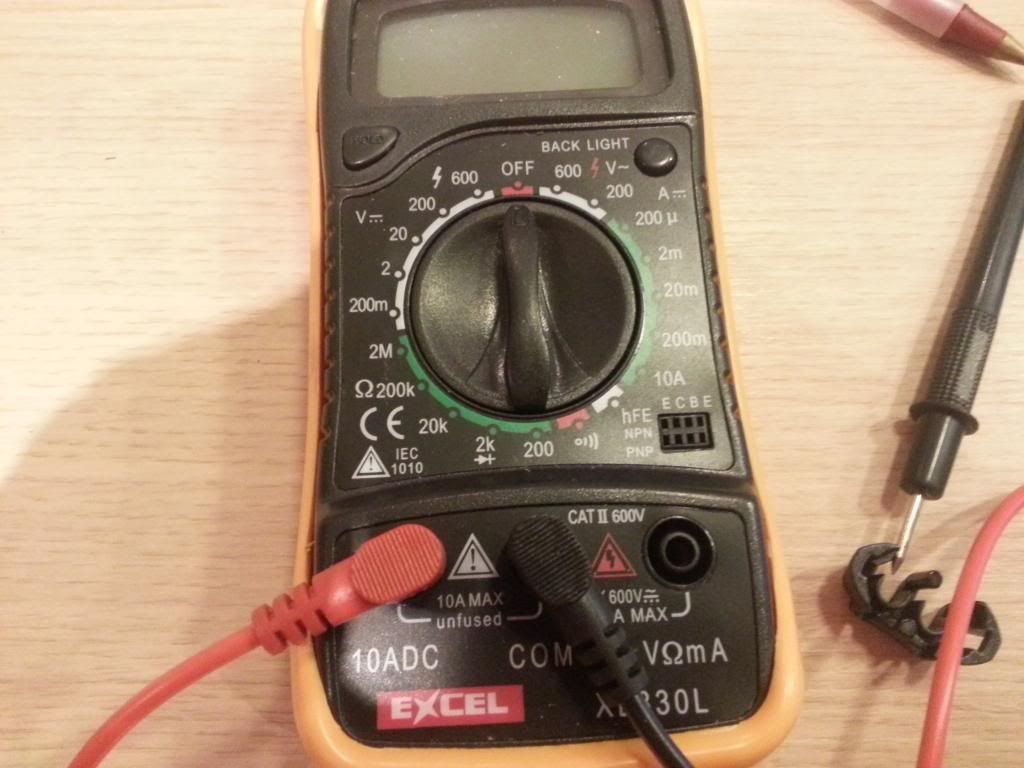Today, my 27W LED lights arrived. By'eck they're bright, totally outshining the motorcycles own headlight. It was my original intention to have one main, one dip, as supplementaries for the existing headlight, but after I jury-rigged a portable unit to a 12V battery and carried them out into country lane I live on, I let them rip. First one - impressive enough, then the other - very much more useful with two on. 
I'll be putting these ones on the motorcycle, but it occurred to me that the cheap DC/DC converters will easily run one of these from the bike battery and 27W from 36V isn't going to be much of a hindrance to the main battery pack.
The light output is just; oh wow...


It's the square ones down the page...
Aliexpress.com : Buy 20% Off 2pcs 4" inch 27W 9 LED Working Light Spot Flood Lamp Motorcycle Tractor Truck Trailer SUV JEEP Offroads Boat 12V 24V 4WD from Reliable Work Light suppliers on LarcoLais
I'll be putting these ones on the motorcycle, but it occurred to me that the cheap DC/DC converters will easily run one of these from the bike battery and 27W from 36V isn't going to be much of a hindrance to the main battery pack.
The light output is just; oh wow...
It's the square ones down the page...
Aliexpress.com : Buy 20% Off 2pcs 4" inch 27W 9 LED Working Light Spot Flood Lamp Motorcycle Tractor Truck Trailer SUV JEEP Offroads Boat 12V 24V 4WD from Reliable Work Light suppliers on LarcoLais








